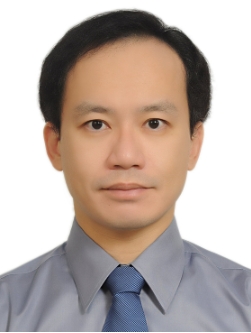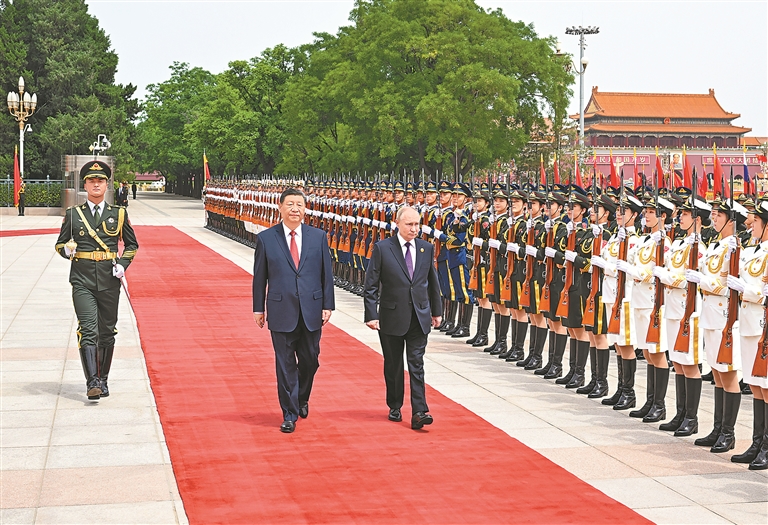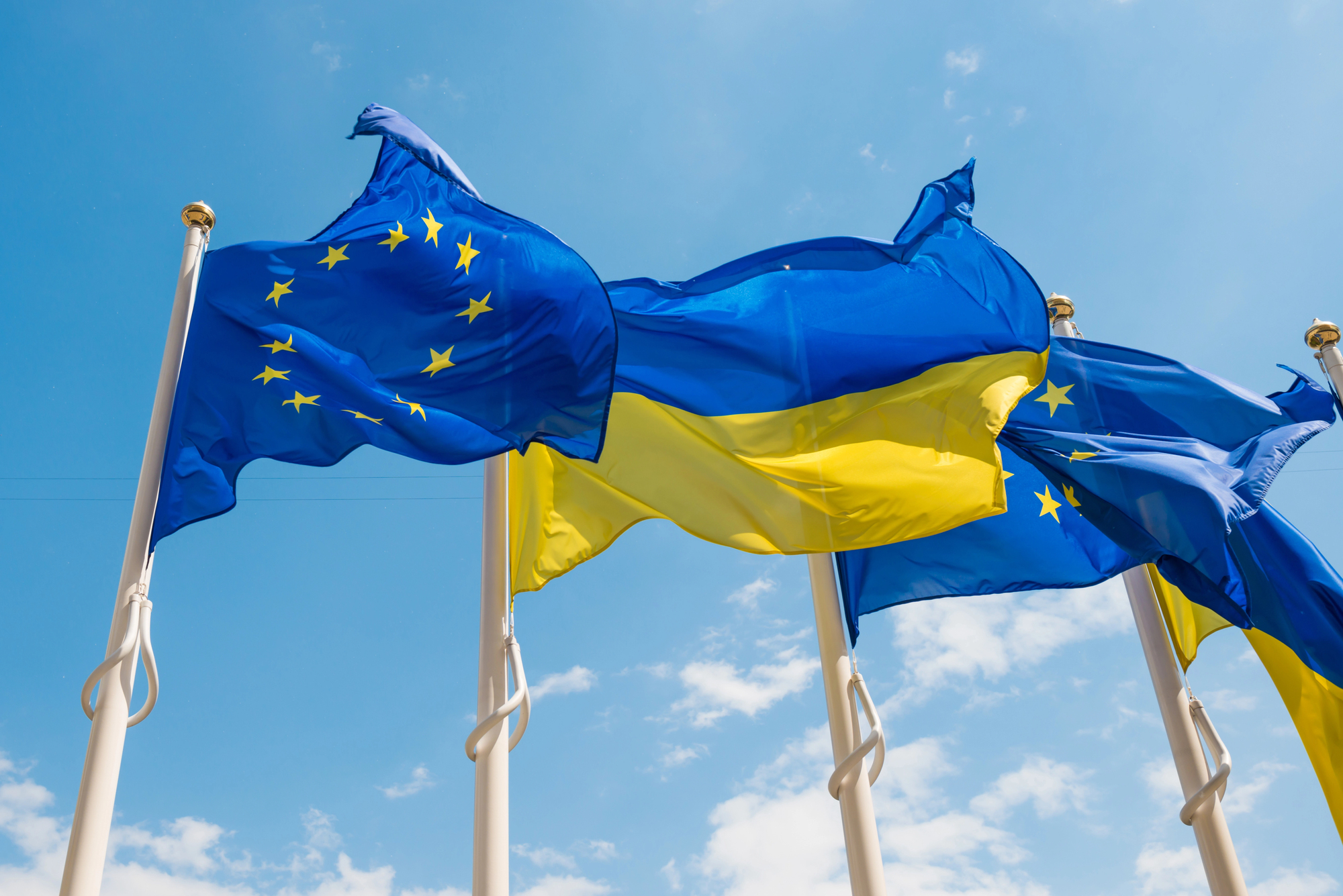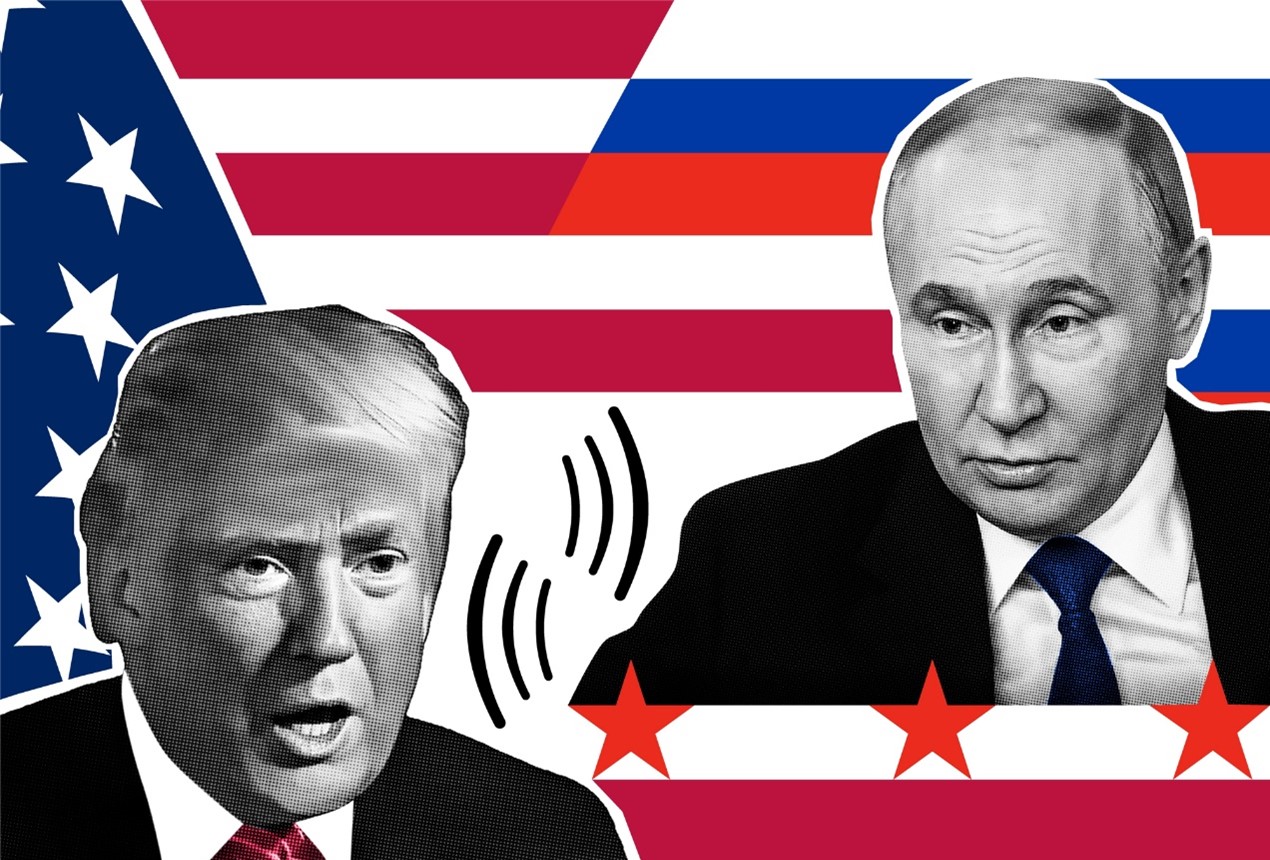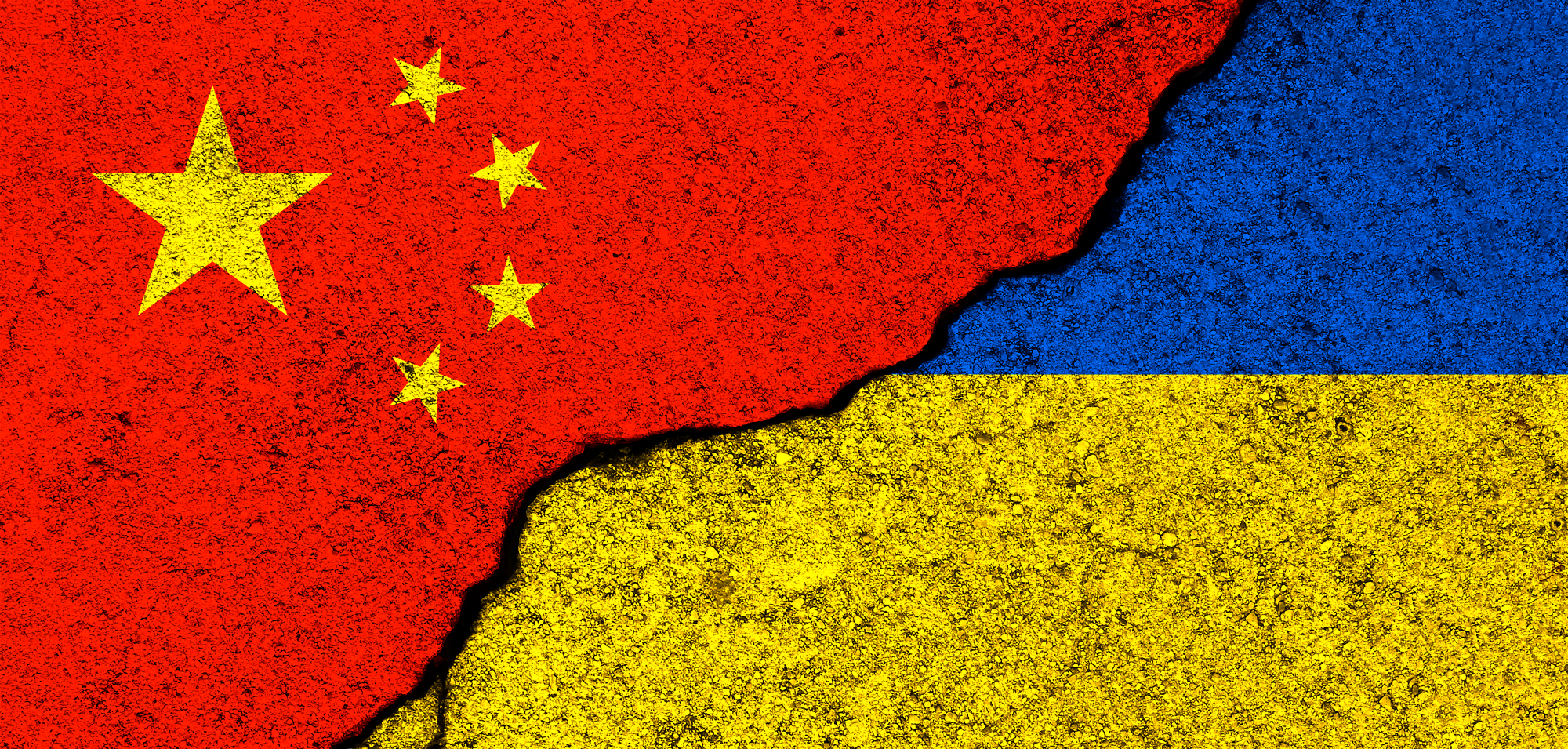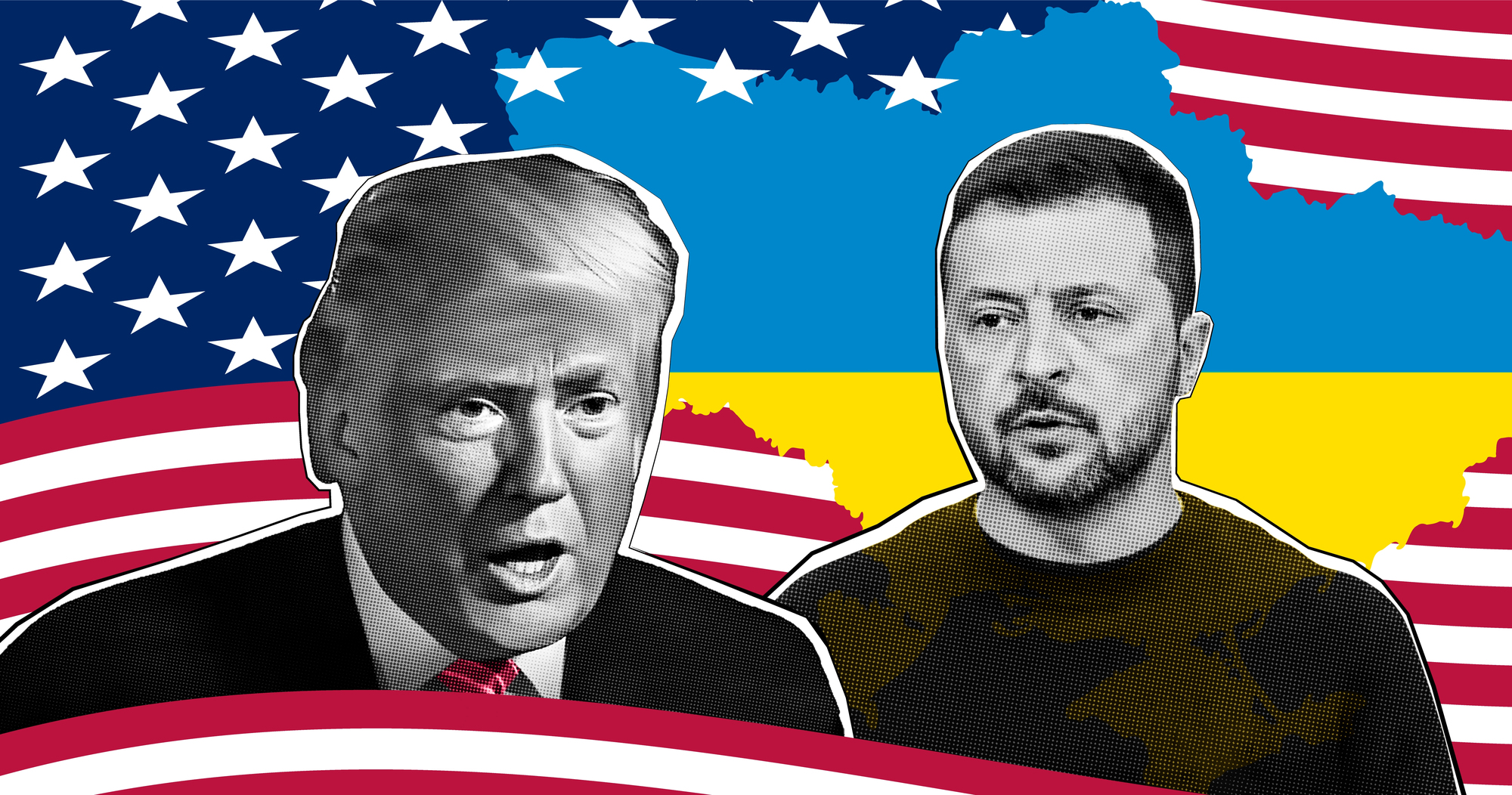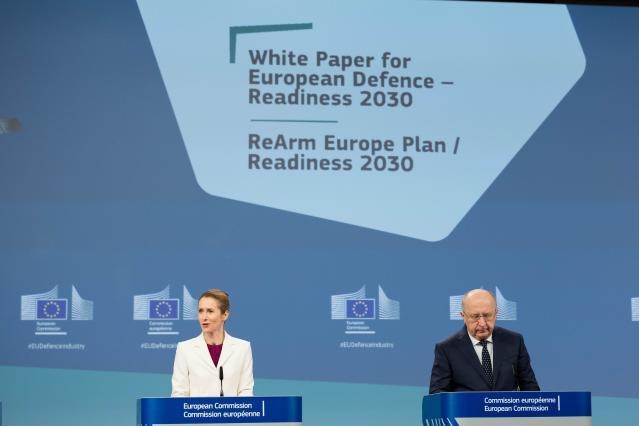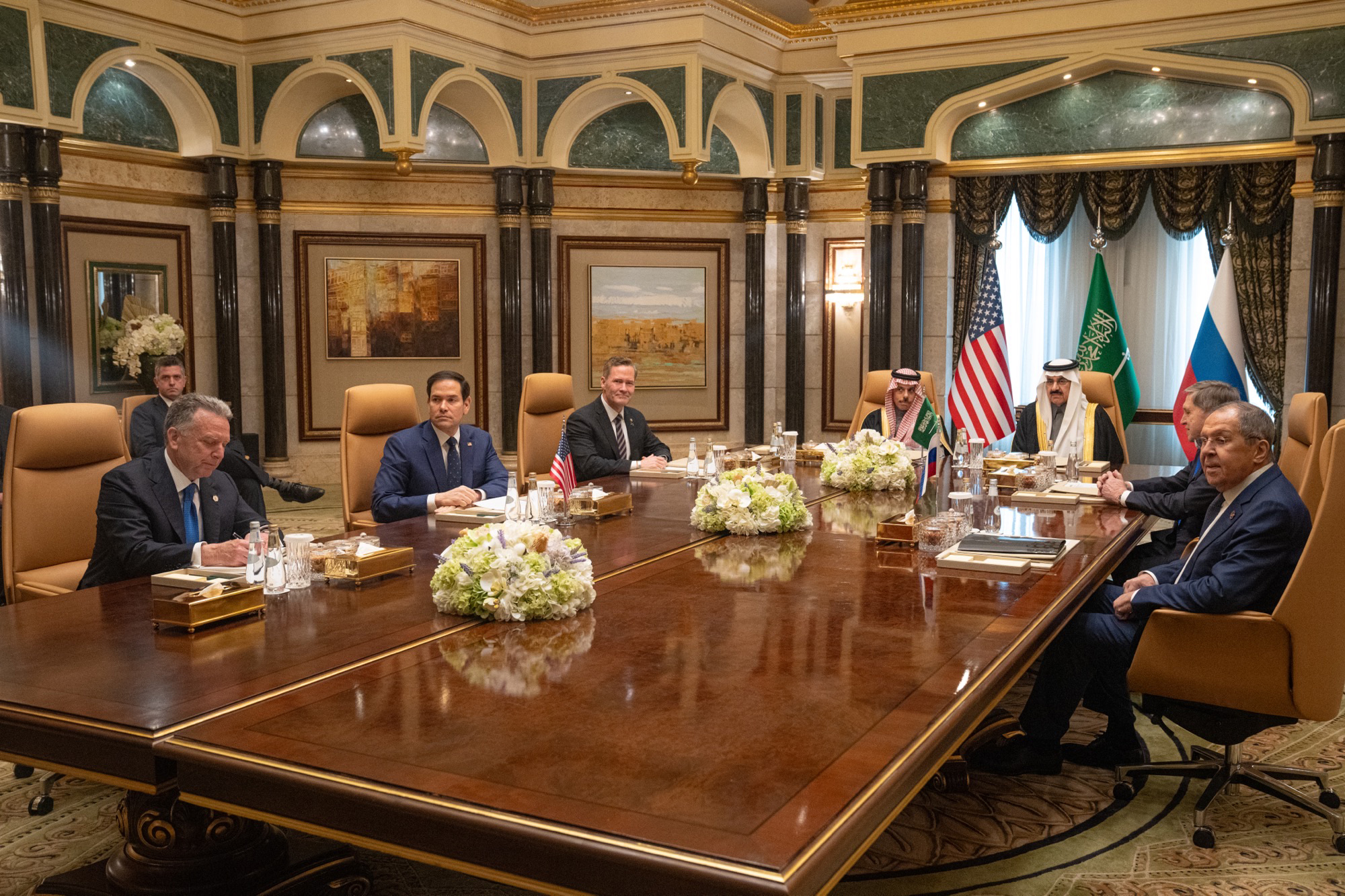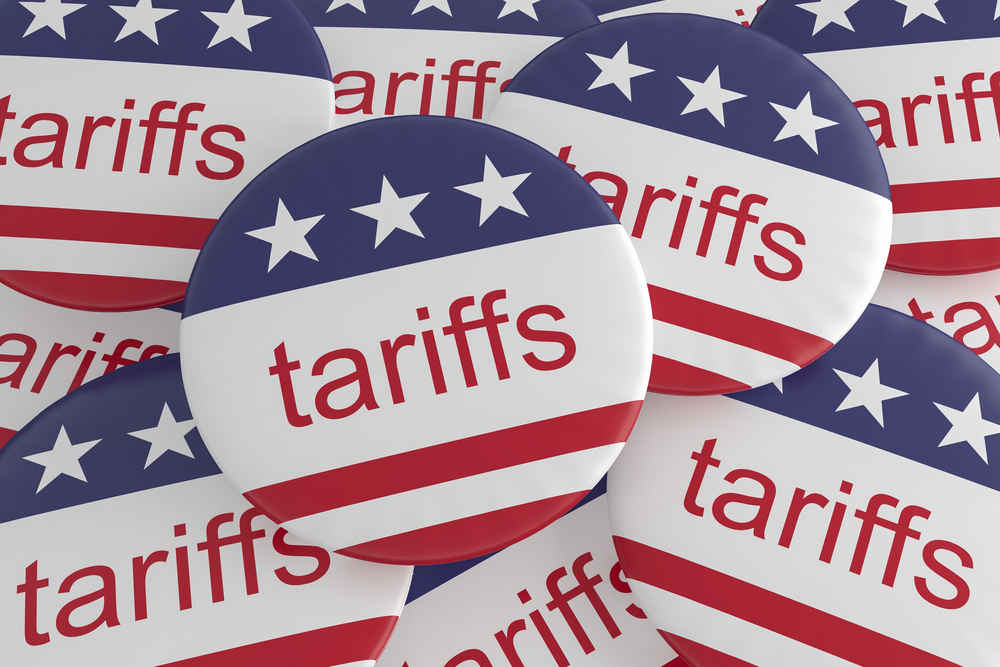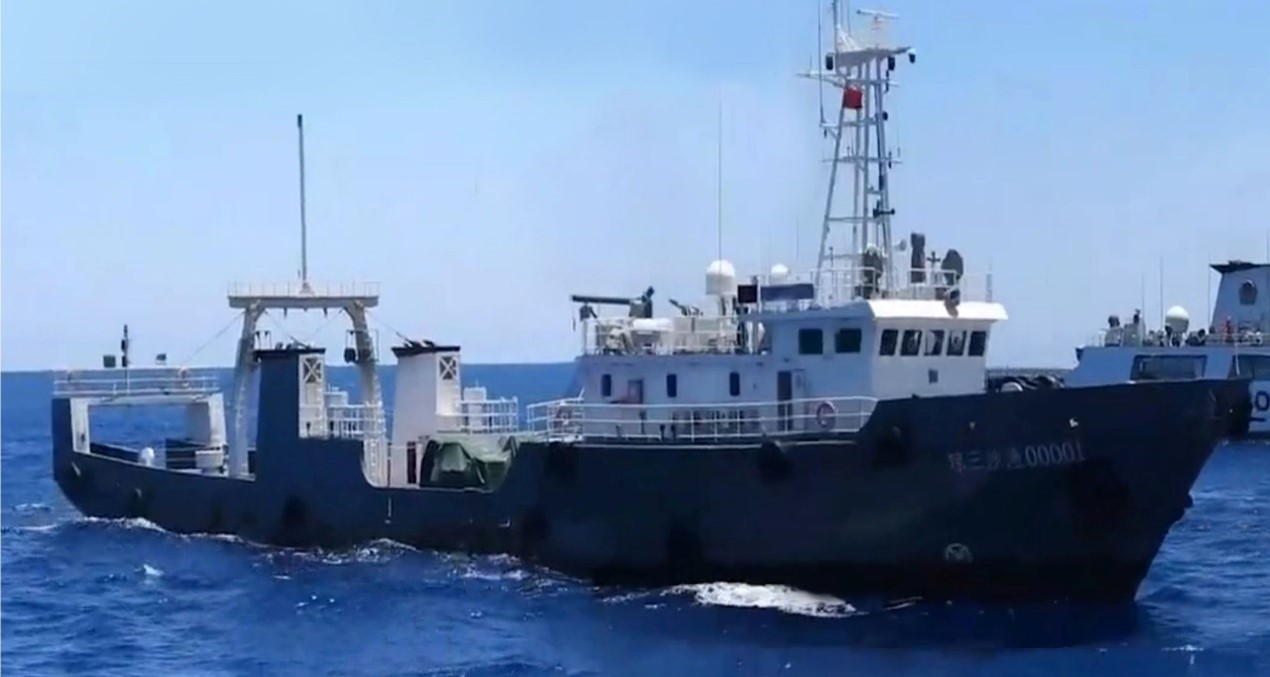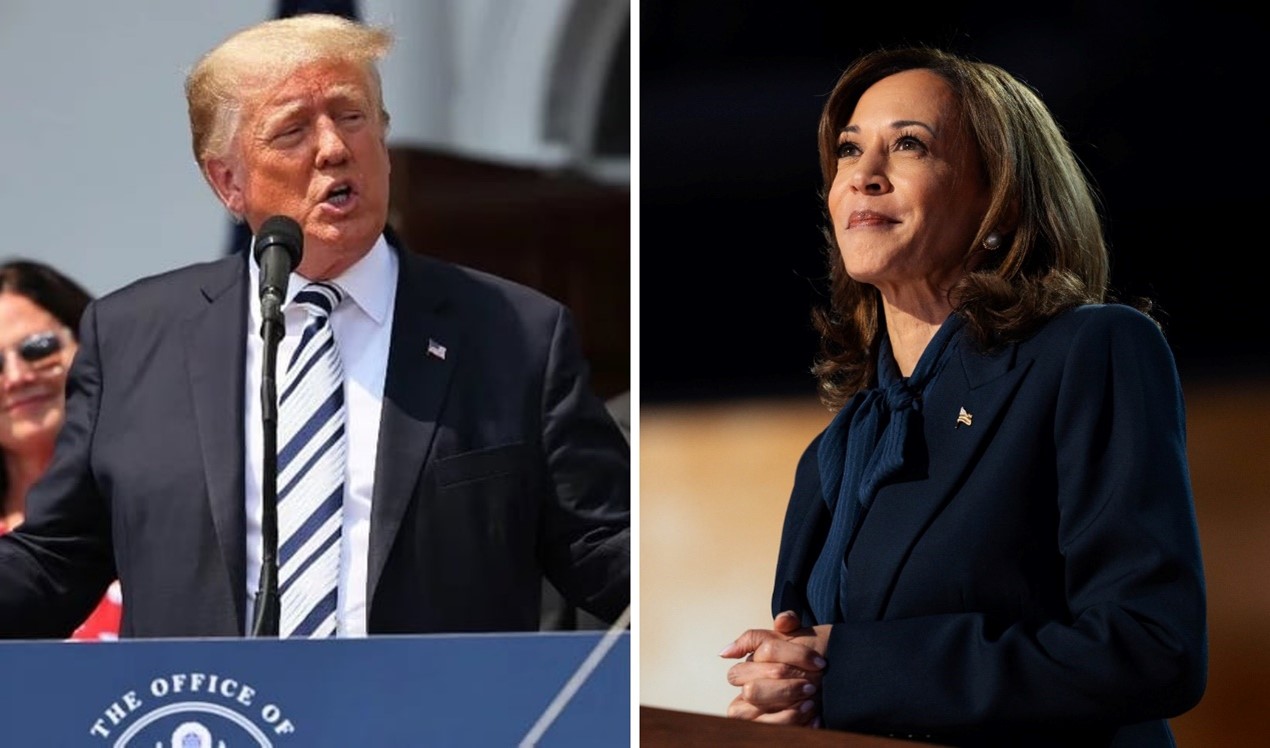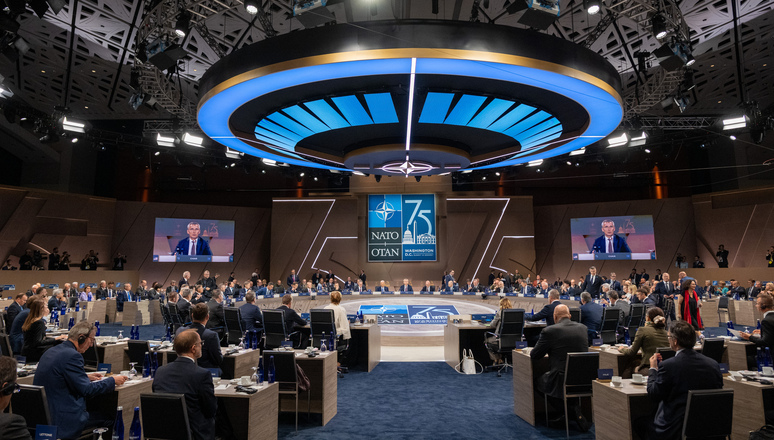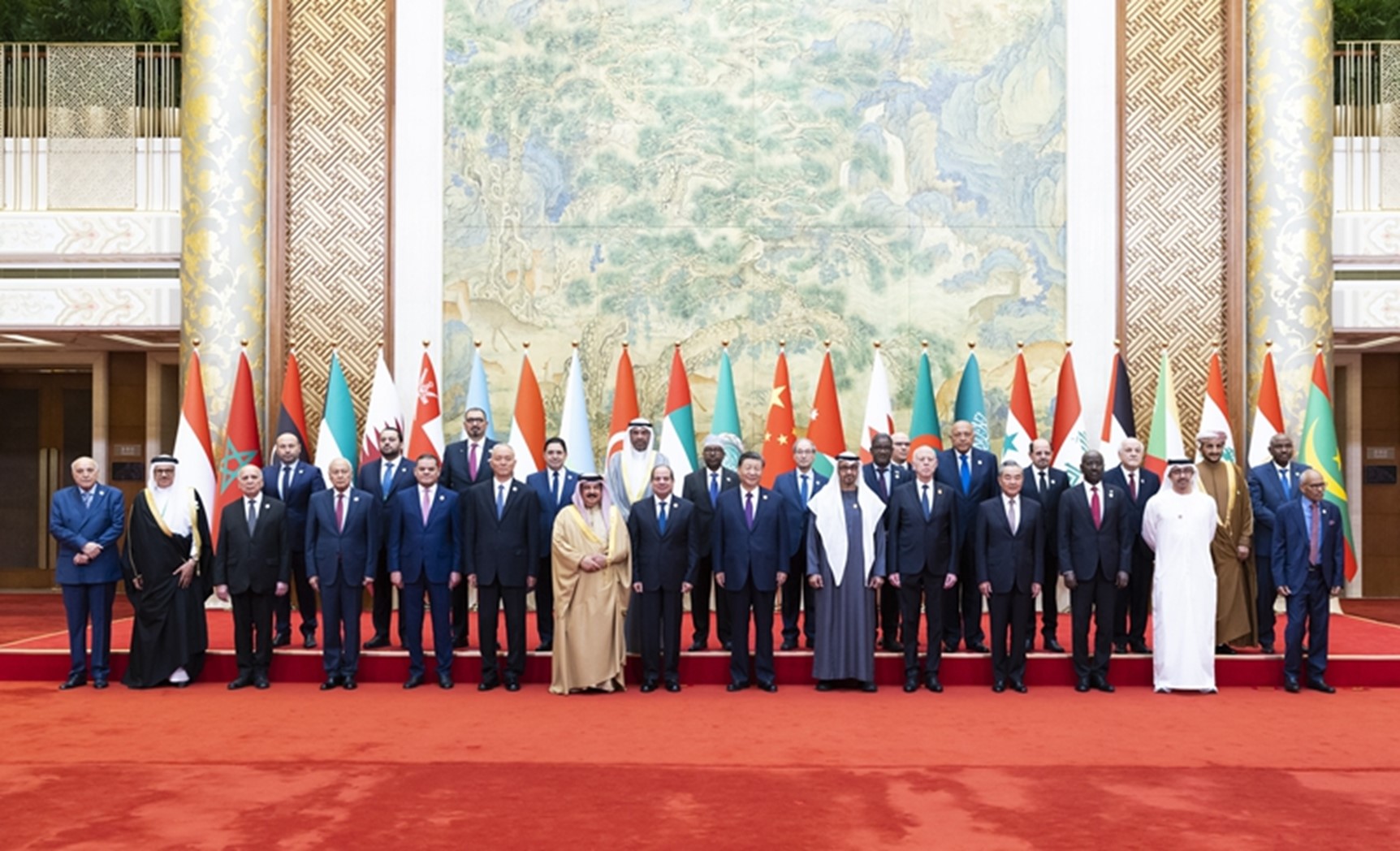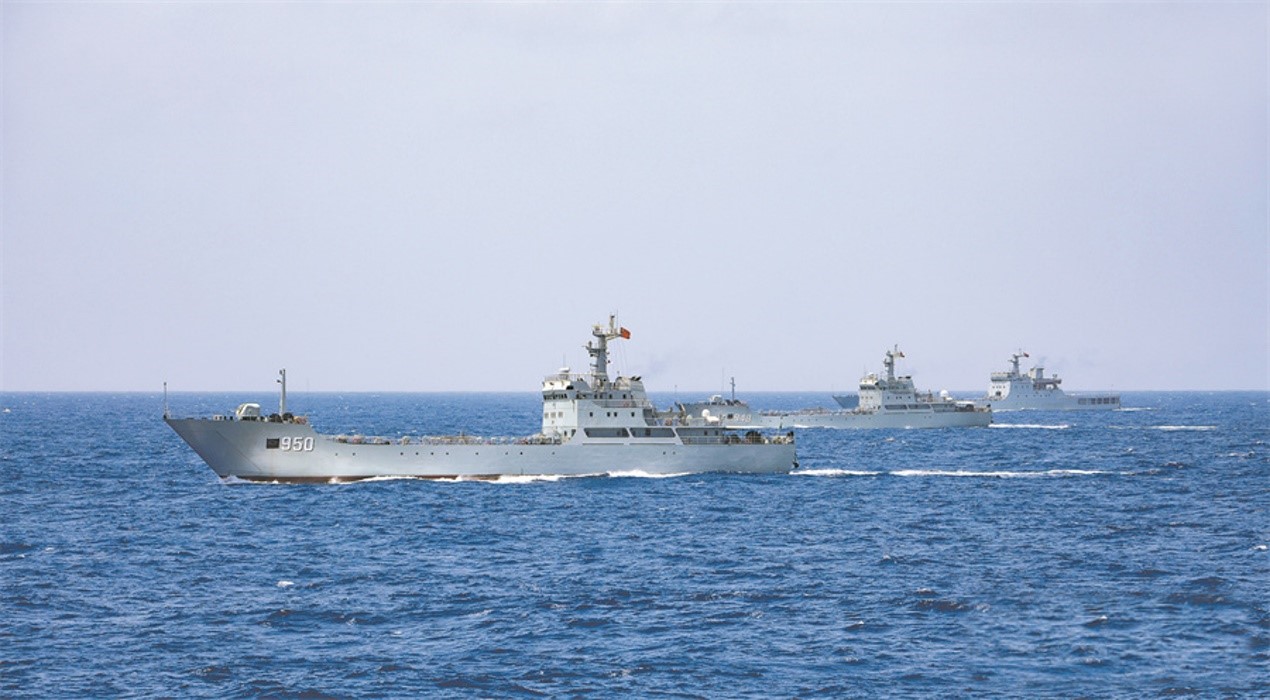Putin’s State Visit to China and the Prospects for Sino-Russian Relations
From May 16-17, 2024, Russian President Vladimir Putin made a state visit to China at the invitation of Chinese leader Xi Jinping. They met in Beijing, and signed the Joint Statement. Picture source: 饒愛民, May 16, 2024, 《中共黑龍江省紀律檢查委員會》, https://www.hljjjjc.gov.cn/Hljjjjc/html/news_detail.html?publish_id=7f557118aebf4a4c8579cbf07d199c5a&&.
Prospects & Perspectives No. 30
Putin’s State Visit to China and the Prospects for Sino-Russian Relations
By Shiau-shyang Liou
From May 16-17, 2024, Russian President Vladimir Putin made a state visit to China at the invitation of Chinese leader Xi Jinping. This marked Putin’s first foreign visit since commencing his fifth term in office, reciprocating Xi’s visit to Russia as his first foreign visit after beginning his third term last year. It was Putin’s 22nd visit to China and his third state visit since 2012 and 2018. On May 16, Putin met Xi in Beijing, signing the “Joint Statement of the People’s Republic of China and the Russian Federation on Deepening the Comprehensive Strategic Partnership of Coordination for the New Era in the Context of the 75th Anniversary of China-Russia Diplomatic Relations.” On May 17, he traveled to Harbin to participate in the 8th China-Russia Expo and visited Harbin Institute of Technology.
Highlights of the 2024 Joint Statement
The joint statement largely continues the themes from the statement issued during Xi’s 2023 visit to Moscow, reflecting ongoing priorities in China-Russia cooperation. It reaffirms past positions, introduces further cooperation initiatives, and addresses new issues arising from current global developments.
Reaffirmation of Established Positions
Many elements from the 2023 statement were reiterated, such as the compatibility of the Belt and Road Initiative with the Eurasian Economic Union and the Greater Eurasian Partnership. The statement emphasizes the importance of the Shanghai Cooperation Organization, BRICS, and their cooperation within the G20. Russia continues to highly value China’s Global Development Initiative and remains committed to participating. Russia also supports China’s stance and constructive role on the Ukraine issue. Both countries oppose exclusive and closed groupings in the Asia-Pacific, particularly military alliances targeting third parties, and express concerns over the negative impact of the U.S. Indo-Pacific Strategy, NATO, and AUKUS.
They reaffirm the centrality of ASEAN in the region’s multilateral architecture and aim to enhance ASEAN-led mechanisms. The statement reiterates the need for a two-state solution to the Palestinian issue and identifies potential for cooperation between China and the Collective Security Treaty Organization in maintaining regional security in Eurasia. Both sides will continue to strengthen strategic coordination on Latin American and Caribbean affairs. These reaffirmations indicate limited changes in the international situation over the past year.
Further Cooperation Initiatives
China and Russia reiterate that their relationship surpasses a Cold War-style military-political alliance, characterized by non-alignment, non-confrontation, and not targeting third countries, and emphasize that their relationship is not a temporary expediency. This counters external perceptions of the Sino-Russian relationship as an expedient axis. Russia reaffirms its commitment to the “One China” principle, adding support for China’s measures to achieve national unification. Last year, Russia endorsed China’s concept of a “Community with a Shared Future”; this year, both sides emphasize it. They continue to oppose interference in internal affairs and attempts to replace the international law-based order with a rules-based order, specifically citing unilateral sanctions bypassing the UN Security Council and “long-arm jurisdiction.” They aim to expand joint military exercises. In space cooperation, both countries specify plans to advance the construction of an international lunar research station and enhance cooperation in the application of the Beidou and GLONASS satellite navigation systems.
Cultural exchanges are to be expanded with more concrete activities. They also reiterate their opposition to nuclear proliferation and nuclear arms race, and specifically oppose linking the Treaty on the Non-Proliferation of Nuclear Weapons with unrelated political objectives. In artificial intelligence, both welcome further governance guidelines from each other. These areas highlight potential for further cooperation, with some initiatives already in practice and others clarifying their stance against external skepticism.
Responses to Changing Circumstances
This year’s statement emphasizes the defense of World War II outcomes and the post-war world order enshrined in the UN Charter, which was absent from the 2023 statement. This benefits both China and Russia while opposing U.S. dominance, as China and Russia remain equal sovereign states within the UN framework. The “Global South” is identified as a key area for future engagement. The condemnation of asset seizures aims to protest against Western measures to freeze Russian overseas assets. Both countries support each other’s urgent initiatives, such as establishing a China-Russia Arctic Route Cooperation Subcommittee, jointly developing Heixiazi Island (Bolshoy Ussuriysky Island) while respecting sovereignty principles, and negotiating with North Korea on Chinese ships’ access to the Tumen River. The condemnation of unilateral measures impacting global supply chains targets Western economic sanctions on China and Russia. Enhanced coordination to counter Western “dual deterrence” against China and Russia and establishing a sustainable security system in Eurasia, first mentioned during Russian Foreign Minister Sergei Lavrov’s visit to China in April 2024, are specifically noted. Russia’s support for China and ASEAN countries in maintaining peace and stability in the South China Sea and opposing external interference clearly relates to the recent escalation of tensions in the region. Opposing “small group” security over regional stability and opposing intimidation, sanctions, and suppression of North Korea aim to win North Korea’s favor.
Key focuses for future China-Russia cooperation include the “Global South,” joint development of Heixiazi Island, China-Russia-North Korea coordination on maritime access, countering Western “dual deterrence,” and advocating for North Korea.
Putin’s Visit to Harbin
In the past, most of Putin’s visits to China were concentrated in Beijing. This time, however, he made a rare trip to Harbin, the provincial capital near Russia, without Xi accompanying him. This move is significant for several reasons.
Symbolic Support for Regional Cooperation
Historically, Sino-Russian relations have been characterized by a “hot central, cold local” dynamic, where the central governments maintain strong ties while regional cooperation lags behind. Putin’s annual participation in the Eastern Economic Forum in Vladivostok to attract foreign investment underscores this dynamic. His first-time participation in the China-Russia Expo in Harbin signals a strong endorsement of bilateral regional cooperation. By attending this event, Putin is showing a commitment to fostering closer ties not just at the national level, but also at the regional level, aiming to invigorate local economic interactions between the two countries.
Strategic Emphasis on Space and Defense Cooperation
The Harbin Institute of Technology is renowned for its research in rockets, missiles, and space technology. Putin’s visit aligns with the emphasis on space security cooperation highlighted during Chinese Central Military Commission Vice Chairman Zhang Youxia’s visit to Moscow last year. While military cooperation between China and Russia can be coordinated privately, Putin’s public visit to Harbin serves as a clear statement to the United States and the West. It underscores the strategic alignment between China and Russia in high-tech defense and space sectors, signaling their readiness to deepen cooperation in these critical areas.
Prospects for Sino-Russian Relations
Putin’s state visit to China continued the pattern of mutual support and enhanced cooperation on areas of common interest, with new highlights emerging in response to changing circumstances. The closer ties between China and Russia amid the Russia-Ukraine War and the U.S.’s Indo-Pacific Strategy indicate that both countries have limited alternatives in their strategic decisions.
Geopolitical Context
China has been facing significant pressure from the U.S., such as plans to deploy new intermediate-range missile systems in the Asia-Pacific region by the end of the year, linking AUKUS to the Taiwan Strait, and preparing to expand economic sanctions against China. Consequently, China’s willingness to coordinate with Russia in counteracting the West’s “dual deterrence” and establishing a sustainable security system in the Eurasian space aligns with Putin’s emphasis on “Eurasian security dialogue” in his State of the Nation address in February 2024. This also complements China’s “Global Security Initiative” proposed in February 2023, much like the previous integration of the Belt and Road Initiative with the Eurasian Economic Union. Although there might be potential conflicts over leadership, such as Putin’s post-Putin-Xi meeting statement to the media that China and Russia are determined to continue promoting the integration of the Eurasian Economic Union with the Belt and Road Initiative, ultimately aiming to establish a “Greater Eurasian Partnership,” this assertion may not be entirely welcomed by Xi. Despite both sides declaring that their national grand strategies do not conflict, overcoming the common adversary — the U.S. appears to be of greater importance.
In the short term, Sino-Russian relations are expected to continue the pattern seen since the outbreak of the Russia-Ukraine War: China maintains a surface neutrality while covertly supporting Russia, which in turn seeks support from various countries, including China. As the conflict progresses, the divide between democratic and authoritarian countries becomes more pronounced, though not to the extent of Cold War-era bloc confrontations. The alignment of Russia, China, North Korea, and Iran will likely strengthen. Beyond North Korea, the “Global South” will become a focus for future cooperation under the frameworks of Russia’s “Eurasian Dialogue” and China’s “Global Security Initiative.” Leadership disputes will take a backseat to immediate geopolitical necessities, pending future developments.
Regional Cooperation and Strategic Moves
The inclusion of Heixiazi Island in China’s official maps last August caused a stir, yet Russia responded with restraint. The recent agreement to jointly develop Heixiazi Island while respecting national sovereignty reflects both nations’ willingness to set aside disputes under U.S. pressure. Putin’s support for local cooperation and the negotiation of Chinese ships’ access to the Tumen River is also a response to the ongoing Russia-Ukraine War and U.S. pressure. The trilateral cooperation among China, Russia, and North Korea in the Tumen River Delta region brings economic complementarity benefits, although some believe that this move may potentially undermine the security of the Sea of Japan in the future. With Russia preoccupied with the war in Ukraine, addressing eastern issues remains secondary, and the dispute with Japan over the Northern Territories is unlikely to escalate to armed conflict. Joint air and naval strategic patrols by China and Russia aimed at Japan are primarily a message to the U.S. rather than an immediate military threat. Thus, development in the Tumen River Delta will focus on economic rather than military aspects.
Key Indicators for Future Development
The progression of the Russia-Ukraine War and U.S. containment efforts in the Indo-Pacific are crucial indicators for the future of Sino-Russian relations. The war’s outcome will influence Russia’s stance toward China. Should Russia win, it may adopt a less conciliatory approach toward China. However, until then, neither China nor Russia is likely to engage in direct military intervention for each other. Despite commitments to expand joint military exercises, these remain distinct from sending troops into battle, serving mainly as a countermeasure against the U.S. Hence, Russia’s support for China’s measures to achieve national unification is currently rhetorical. Russia is unlikely to involve itself militarily in the Taiwan issue, just as China has refrained from sending troops to Ukraine for Russia. Nevertheless, within the U.S.-Russia-China triangle, China and Russia need each other to jointly counterbalance the U.S.
(Dr. Liou is Associate Research Fellow, Division of National Security Research, Institute for National Defense and Security Research.)

